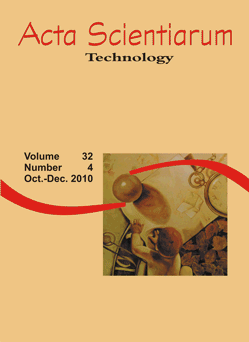<b>Wood light-frame floor diaphragms, made with OSB panels and I-joists, subjected to lateral loads</b> - 10.4025/actascitechnol.v32i4.5046
DOI:
https://doi.org/10.4025/actascitechnol.v32i4.5046Keywords:
timber structure, wood diaphragm, platform frame, wood frame construction, OSB diaphragmAbstract
This work is focused on lightweight wood-frame constructions, which are accepted worldwide and may be considered feasible for use in Brazil as well. It presents the results of experimental tests on floor diaphragms subjected to lateral loads. This is the first time this kind of test is performed in Brazil. Thus, it brings up valuable information about this subject, giving technical information that may contribute to the design and construction of floor diaphragms employing local materials that come from planted forests. The main goal of this research is to evaluate the resistance and rigidity of wood light-frame floor diaphragms, when subjected to monotonic lateral forces acting in the plane of the floor. Full-scale floor diaphragm specimens (2.50 x 5.00 m) were tested with different constructive arrangements, and the influence of the following variables were examined: blocked vs. unblocked diaphragms, rigidity of the nailed joints between I-joists and sheathing; and distance between nails around the perimeter of the OSB boards. The tests showed that the blocked floor diaphragms enable nailing the whole perimeter of the boards, thus increasing its resistance and rigidity.Downloads
Download data is not yet available.
Downloads
Published
2010-12-02
How to Cite
Santos, A. C. dos, & Szcí¼s, C. A. (2010). <b>Wood light-frame floor diaphragms, made with OSB panels and I-joists, subjected to lateral loads</b> - 10.4025/actascitechnol.v32i4.5046. Acta Scientiarum. Technology, 32(4), 375–382. https://doi.org/10.4025/actascitechnol.v32i4.5046
Issue
Section
Civil Engineering
License
DECLARATION OF ORIGINALITY AND COPYRIGHTS
I Declare that current article is original and has not been submitted for publication, in part or in whole, to any other national or international journal.
The copyrights belong exclusively to the authors. Published content is licensed under Creative Commons Attribution 4.0 (CC BY 4.0) guidelines, which allows sharing (copy and distribution of the material in any medium or format) and adaptation (remix, transform, and build upon the material) for any purpose, even commercially, under the terms of attribution.
Read this link for further information on how to use CC BY 4.0 properly.











8.png)




